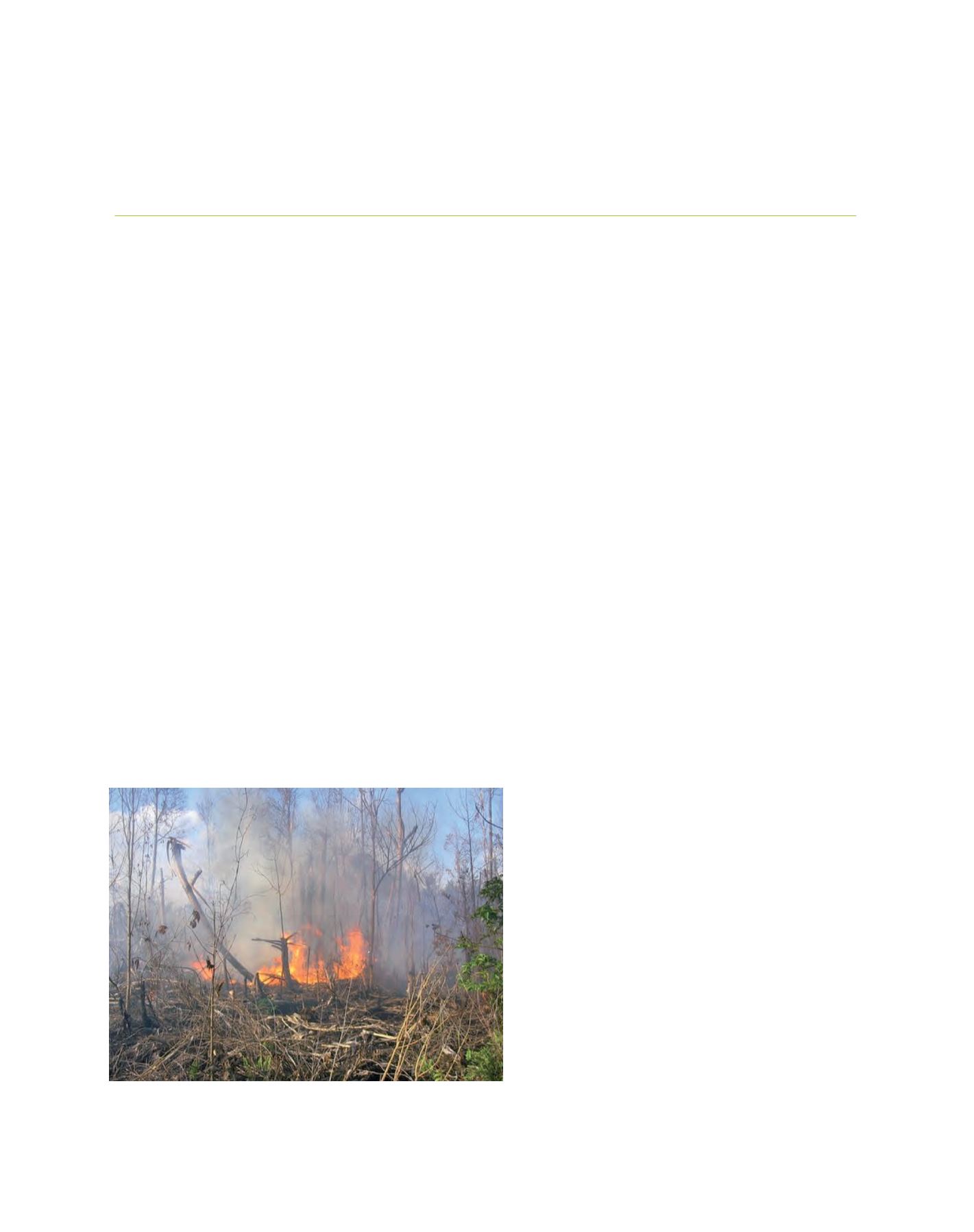

[
] 94
Beyond the tropical archipelago:
the provision of climate services in Indonesia
Sri Woro B. Harijono and Edvin Aldrian, Meteorological Climatological and Geophysical Agency, Indonesia
T
he maritime continent of Indonesia is one of the few regions
in the world that covers a vast tropical archipelago. Located
between two large oceans and continents that create a
considerable amount of evaporation and rainfall, Indonesia has a
humid tropical climate and is one of the most vulnerable areas to
the impacts of climate change. Severe weather and climate extremes
are set to become more frequent and intense as the direct impact of
climate change hits. Proximity to the ocean governs most climate
phenomena in the region, although for many years scientists have
found that picking up on changing ocean characteristics is useful
for predicting seasonal climate change. Despite this, the use of
climate information in this region is still poor. A recent feature
of escalating extremes in climate includes the strengthening and
more frequent occurrence of El Niño-Southern Oscillation (ENSO),
leading to longer periods of drought. When ENSO last occurred,
the drought period was followed by forest fires in Sumatera and
the Borneo islands, causing transboundary smoke-haze pollution.
With a common expectation that events like this will occur more
often in the future, Indonesia must make use of its climate informa-
tion to become more prepared.
Historical background
Indonesia’s provision of weather and climate information services
can be traced back to the Dutch colonial era of the 19th century when
information was used by plantation companies all over
the archipelago. Since gaining independence, climate
services in the country have focused on characterizing
annual monsoon cycles, and wet and dry seasons for
the agricultural sector and the management of water
resources. It has long been recognized, however, that
at present these services are not yet adequate enough to
provide information for the entire population.
As the need for sectoral adaptation strategies has grown
with the realisation of the severity of the impacts of climate
change, the role of the Meteorological Climatological and
Geophysical Agency (BMKG) has evolved. Until mid
2007, the function of the climate service division was
purely to act as a supplement to the country’s weather
services. Now, this division has been elevated to one of
the pillars of the institution and the term ‘climatology’ has
been introduced into the institution’s name following a
presidential decree in mid 2008. Currently, there are two
kinds of climate information service provided by BMKG:
a climate variability service and climate change service.
Servicing climate variability information
The Center for Climate, Agroclimate and Marine
Climatology at BMKG provides climate services and
information for the agriculture, water resource and
marine sectors – including seasonal climate predictions
for flooding, climate information for crop suitability
and marine climate information.
BMKG has a long history in providing climate informa-
tion for the agricultural industry. Recently, several districts
in Indonesia have piloted agriculture extension activity
projects with the aim of getting local farmers accustomed
to using climate information that relates directly to their
livelihoods. The result of this has been very positive, most
notably in Indramayu – the ‘rice bowl’ district inWest Java
–where economic and welfare conditions have improved
significantly because of the intensification of agricultural
activity. The success of this programme relies on BMKG’s
ability to translate scientific language into a language the
farmer can easily understand. This is a task carried out by
people working for the project.
Sustaining water resources
Another key function of the climate service at BMKG is to
provide information for the management of Indonesia’s
water resources. The water authority in West Java in
G
overnance
and
P
olicy
Forest fire usually follows the long drought caused by severe El Niño conditions.
Climate information services to predict the dry condition far in advance will help
mitigate the devastating impact of the forest fire
Image: BMKG
















